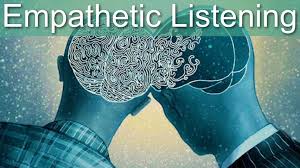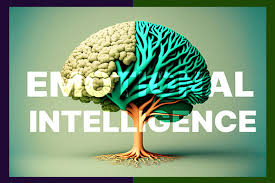Introduction.

Empathy is a fundamental aspect of effective communication that enables individuals to connect on a deeper level. It involves understanding and sharing the feelings of others, which can lead to improved relationships, enhanced collaboration, and a more positive communication environment. This article explores the role of empathy in communication, its benefits, and practical strategies for cultivating empathetic interactions.
1. Understanding Empathy
Explanation: Empathy is the ability to recognize and understand the emotions of others. It goes beyond sympathy, which involves feeling pity or sorrow for someone else's misfortune.
Key Words: Empathy, Understanding, Emotions
Example: Listening to a friend express their feelings about a tough situation and acknowledging their struggle without judgment.
2. The Importance of Empathy in Communication
Explanation: Empathy fosters trust, respect, and open dialogue in communication. It encourages people to share their thoughts and feelings, leading to more meaningful interactions.
Key Words: Trust, Respect, Open Dialogue
Example: A manager who demonstrates empathy towards their team members is more likely to create a supportive work environment, increasing morale and productivity.
3. Active Listening: A Key Component of Empathy
Explanation: Active listening involves fully concentrating on the speaker, understanding their message, and responding thoughtfully. It is essential for practicing empathy effectively.
Key Words: Active Listening, Concentration, Response
Example: Nodding and providing feedback while a colleague shares their concerns about a project, showing that you are engaged and value their input.
4. Nonverbal Cues and Empathy
Explanation: Nonverbal communication, such as facial expressions, tone of voice, and body language, can convey empathy and understanding. Being aware of these cues enhances empathetic interactions.
Key Words: Nonverbal Communication, Facial Expressions, Body Language
Example: A warm smile and open posture can signal empathy and encouragement during a difficult conversation.
5. Reflective Responses
Explanation: Reflective responses involve paraphrasing what the speaker has said and acknowledging their feelings. This technique demonstrates that you are listening and empathizing with their experience.
Key Words: Reflective Responses, Paraphrasing, Acknowledgment
Example: Saying, “It sounds like you’re feeling overwhelmed by your workload,” validates the speaker’s emotions and encourages further discussion.
6. Cultivating Emotional Intelligence
Explanation: Emotional intelligence (EI) is the ability to recognize and manage your own emotions and those of others. Higher EI contributes to more empathetic communication.
Key Words: Emotional Intelligence, Self-awareness, Emotional Regulation
Example: A person with high EI might recognize when they are becoming frustrated in a conversation and take a moment to breathe and refocus.
7. Empathy in Conflict Resolution
Explanation: Empathy plays a crucial role in resolving conflicts by allowing individuals to understand differing perspectives and find common ground.
Key Words: Conflict Resolution, Perspectives, Common Ground
Example: During a disagreement, acknowledging the other person’s feelings and viewpoint can lead to a more constructive dialogue and resolution.
8. Barriers to Empathy
Explanation: Barriers such as bias, preconceived notions, and emotional distance can hinder empathetic communication. Recognizing these barriers is the first step toward overcoming them.
Key Words: Barriers, Bias, Emotional Distance
Example: Prejudice against a group can prevent individuals from empathizing with their experiences, leading to misunderstandings.
9. Practicing Empathy Daily
Explanation: Developing empathy is a continuous process that can be enhanced through practice. Regularly reflecting on your interactions and considering others’ feelings can strengthen your empathetic skills.
Key Words: Practice, Reflection, Strengthening Skills
Example: Journaling about daily interactions and noting instances where you could have been more empathetic can help you improve.
10. The Positive Impact of Empathy on Relationships
Explanation: Empathy leads to stronger relationships, better teamwork, and improved communication outcomes. When people feel understood, they are more likely to engage positively.
Key Words: Strong Relationships, Teamwork, Communication Outcomes
Example: A team that fosters empathy among its members is more likely to collaborate effectively and achieve shared goals.
Conclusion.
Empathy is a vital skill in communication that fosters understanding, connection, and collaboration. By actively listening, recognizing nonverbal cues, and practicing reflective responses, individuals can enhance their empathetic abilities and create a more positive communication environment. Overcoming barriers to empathy and cultivating emotional intelligence further strengthen these skills. Embracing empathy in communication not only improves relationships but also contributes to personal and professional success. As we strive to connect with others on a deeper level, empathy becomes the bridge that fosters genuine understanding and compassion


You must be logged in to post a comment.